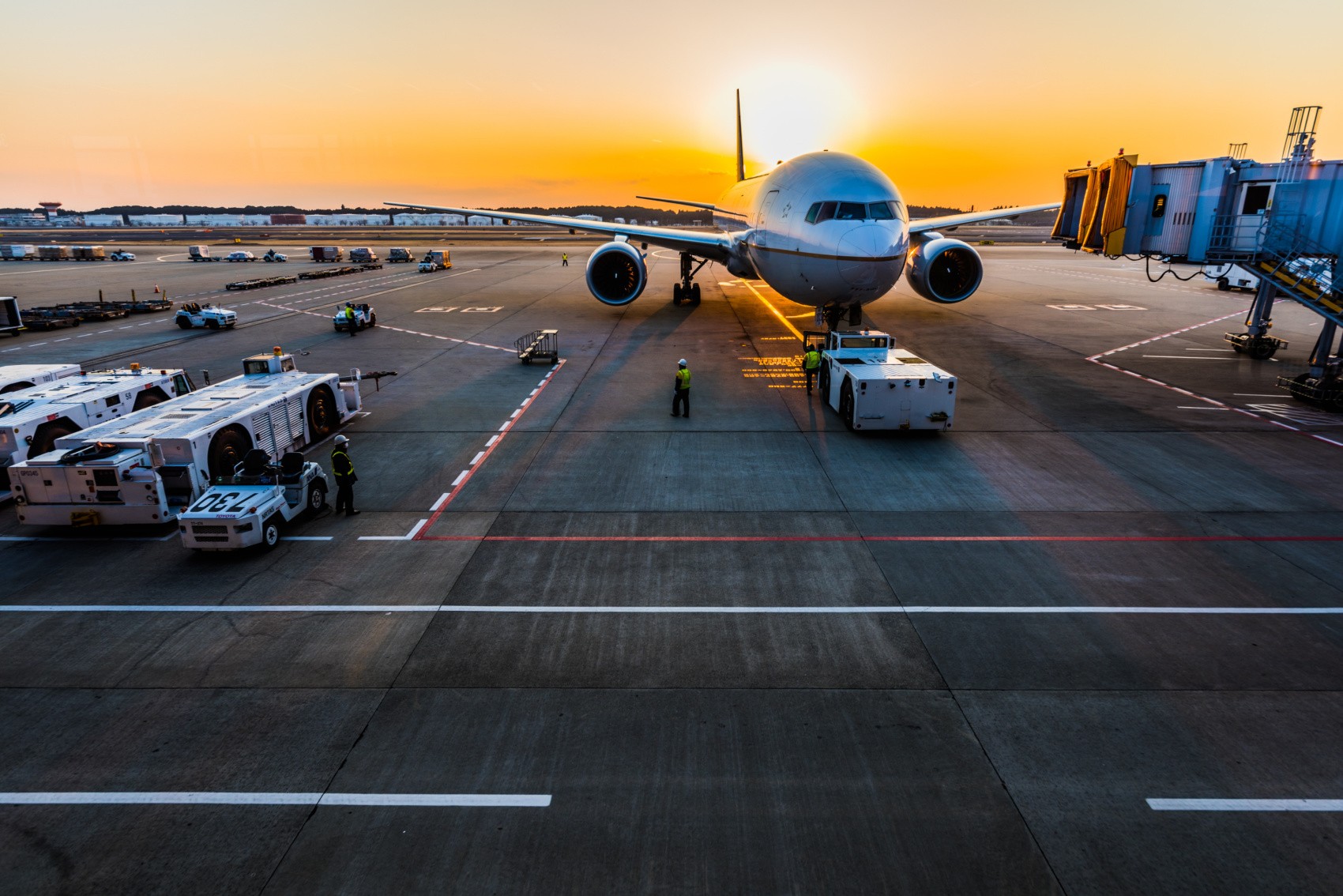AirTag luggage might be the biggest travel hack of the moment, as air travellers scramble to keep tabs on their bags during a chaotic travel season. What could be better than using technology to pinpoint the location of your suitcase anywhere in the world, right?
Our travel experts here at aloSIM chatted with airport insiders to get the scoop on how to use AirTags on your luggage, what to keep in mind when travelling with AirTags, and how accurate they really are when it comes to reuniting with your suitcase.
What are luggage AirTags?
Apple AirTags are handy little devices that let you track the location of your belongings, whether it’s your bicycle, laptop case, wallet, backpack, or the suitcase you’ll be checking on your next vacation. They’re currently $29 USD ($39 CAD) for one, or $99 USD ($129 CAD) for a four-pack, and you can even get free engraving with initials, numbers, or select emojis.
How do AirTags work?
AirTags themselves don’t have data or Wi-Fi connections, but they rely on the Find My network (think of the millions of connected iPhones, iPads, and Mac devices floating around) to track their location. Apple describes it as the AirTags sending out secure Bluetooth signals so they can be detected.
How to set up a luggage AirTag
AirTags are really easy to set up. Just open the box and follow the instructions for one-tap set-up, and you’ll be prompted to give your AirTag a name (“Mom’s Red Suitcase,” etc.) so you can track its location.
How do I attach a luggage AirTag?
Apple sells dozens of different AirTag loops and holders, so you could use one of these to secure an AirTag to the outside of your suitcase, but most travellers keep their AirTag safely inside their luggage where it can’t be ripped off or damaged. (AirTags are water resistant, but not waterproof.)
How do I find my AirTag location?
You can check your the location of your AirTags in the ‘Find My’ app on any iOS device (iPhone, iPad, Mac) or if you lose access to those iOS device, you can always download the Tracker Detect app on an Android device.
Do you have to charge AirTags?
AirTags don’t have charging ports and can’t be charged wirelessly, but they do contain batteries (those little round CR2032 batteries) that need to be changed. Your iPhone or iPad will tell you when it’s time to put in fresh AirTag batteries so it can maintain a connection.
Are AirTags allowed on planes?
Absolutely! AirTags only contain 0.1 grams of lithium, which is well below the FAA (Federal Aviation Administration) limit, so they’re allowed in checked bags as well as carry-on bags.
Reminders when using luggage AirTags during a trip
They’re not going to show your bag’s precise location within an airport
Airline employees report that sometimes a passenger will claim their luggage AirTag is showing their suitcase at a particular gate, and wave their phone around as proof, but their suitcase is actually sitting in a totally different part of the airport.
“Many passengers watch their luggage AirTags like a hawk and think they can track their bag every second, but that’s not how it works,” an insider source told aloSIM. “You have to take the ‘location’ with a grain of salt.”
Airline employee won’t use AirTags to hunt for your bag
If your flight is about to board and you see the luggage being loaded onto your plane, but your AirTag is showing your suitcase is still in another part of the airport, chances are that airline staffers aren’t going to launch a frantic hunt for your bag.
“If you’re really concerned your bag isn’t where it needs to be, you can mention it to the agent at the desk and they might make a call, but they’re not going to drop everything because of where your luggage AirTag is pinging,” another source reports. “There’s a system in place to get baggage where it needs to be, and your bag is probably in a cart, waiting to be loaded onto your flight.”
If your suitcase is mid-flight, its location will still ping as the departure airport
AirTags need to connect to nearby iPhones or iPads in order to sort out their location, and if your suitcase is tucked in the cargo hold at 25,000 feet, those nearby devices are all on Airplane Mode. (Except the flight attendants who might be texting in the back gallery, but you didn’t hear that from us.)
“We’ve seen passengers panic that their luggage was left behind, but actually their luggage AirTag is just showing their suitcase back at the airport because that’s the last location it was pinged,” says one airport insider.
You might forget about the tried-and-true methods for getting reunited with your suitcase
Your suitcase AirTag isn’t the be-all, end-all of making sure you get your checked luggage back. It’s much more important to have a luggage tag securely attached to the outside of your suitcase that includes all relevant contact info, including the address(es) where you will be on vacation and a phone number you’ll be able to answer on vacation.
If you really want to give your bag the best chance of finding you in the Arrivals area, you should put all of the same information on a piece of paper tucked into an outside pocket of your suitcase, in case the luggage tags gets ripped off or destroyed. If airline employees find an orphaned bag without a tag, they know to check inside the suitcase to see if they can figure out who owns it.
An AirTag can’t save your bag from being missed if you arrive late
Once you check a suitcase, it moves to a security area to be X-rayed, and depending on what the X-ray shows, your suitcase might move to a secondary area to be manually searched. After your bag is deemed safe, it moves to a sorting system where So if you show up late for your flight, your checked luggage has less time to work its way through the system so it can be loaded onto your flight.
Instead of using a luggage AirTag and watching the dot obsessively, it’s better to arrive on time (or early) and check your bag right away, so it has plenty of time to move through the system and end up where it needs to be: loaded onto your flight, where it can meet you in the Arrivals area right on time.
Tips for tracking AirTag luggage
1. Pause before you panic. In your “Find My” app, make sure the AirTag’s status shows “Now.” Then you know it’s a current update, and not a location update from hours prior.
2. Remember the AirTag location is approximate. Your “Find My” app might be able to pinpoint the exact location of your iPhone, but that’s because it has its own steady data connection. Your AirTag relies on the connection of the devices around it, so it might not be as accurate. Just because your bag is showing at a different part of the airport doesn’t mean it’s not going to make the flight.
3. Your contact information is far more valuable. Use a study luggage tag with your home address as well as the address(es) where you will be on vacation and a phone number you’ll be able to answer on vacation and at home. Put this same information on a piece of paper inside your suitcase in case the tag goes missing.
4. Don’t arrive late for your flight. If your airline says to arrive two hours prior to your flight, they mean it. And even if you don’t think it’s necessary because security lineups won’t take that long, remember that any checked luggage needs time to go through a complex system in order to be loaded onto the flight.
5. Use prepaid data to track your AirTag. Don’t rely on shoddy airport Wi-Fi to track your luggage AirTag when you land. With an eSIM (digital SIM card) from aloSIM, you can get off the plane and use your prepaid data to instantly connect to a local data network, giving you a steady data connection to be able to track your luggage.
Have you ever used luggage AirTags? Do you have a tip or piece of advice that we’ve missed? Pop over to Instagram and tell us, so we can update this post.





